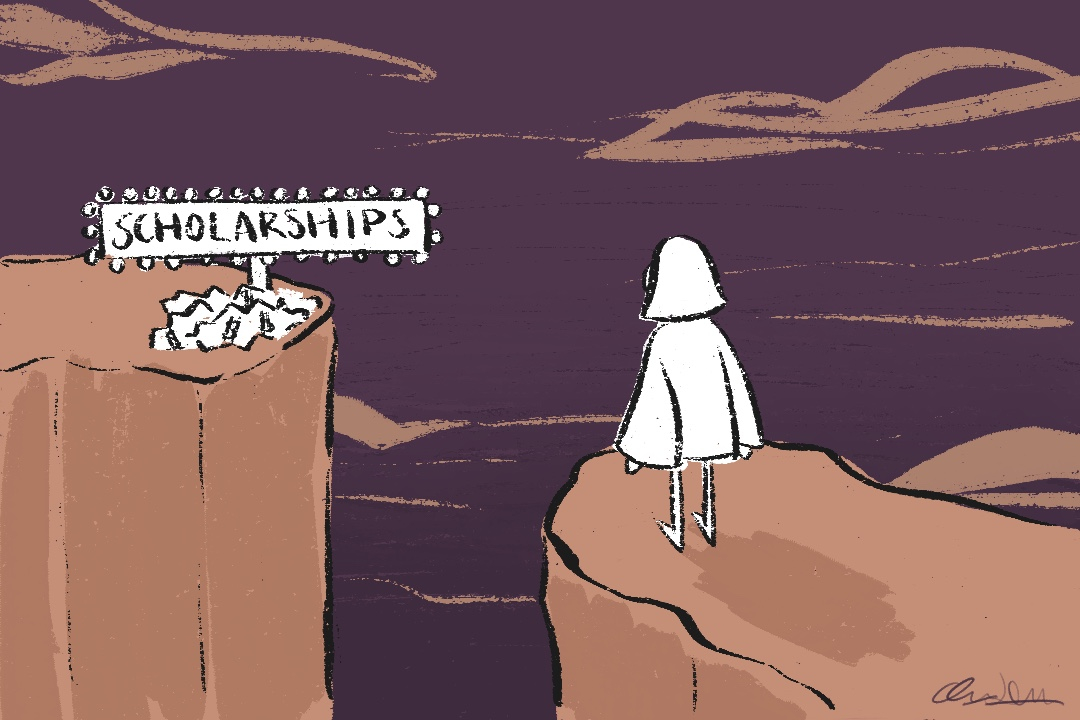The past few years have seen drastic changes to student financial aid in Ontario, with the Ontario Student Assistance Program (OSAP) receiving huge funding cuts that incited mass student protests in 2019.
OSAP, however, is not the only source of student financial aid. U of T’s website on financial aid states that its goal is to fill the gap left when OSAP or other government financial aid is insufficient. However, some student groups have questioned whether the university has met this goal.
Even though official university policy states that “no student offered admission to a program at the University of Toronto should be unable to enter or complete the program due to lack of financial means,” many students have reported that financial aid remains insufficient.
Falling through the gaps
In an email to The Varsity, a U of T spokesperson wrote that the university’s “student aid mechanisms are designed to ensure that every student who needs, and is entitled to, student aid receives it.” They added that any student who is worried about their position should contact U of T’s financial counselling services or consult their website.
In the 2018–2019 academic year, U of T provided a total of $227.9 million in student support, a number that has consistently increased each year, with $211.1 million having been provided in 2017–2018 and $191.8 million in 2016–2017. Most of that money went to financial need services, such as University of Toronto Financial Aid (UTAPS) and also includes graduate fellowships and merit-based awards.
https://plotly.com/~marta.thevarsity/7/
However, the Computer Science Students’ Union (CSSU) recently conducted a survey to assess how higher tuition fees affect students in programs such as computer science, data science, and bioinformatics and computational biology, which were formerly deregulated. Deregulated programs are those which do not have regulations on how much the tuition fees can increase.
The survey found that financial aid is not as effective at curbing student financial strain as the university claims. “Many students in need fall through the cracks and are not supported by the University’s program,” wrote the CSSU in an email to The Varsity.
It added that the university relies on the OSAP definition of financial need, which is defined by the amount of educational cost, including tuition, books, child care, and more, minus the expected financial contribution, which is calculated through student income and assets plus any parental or spousal income and assets, if applicable. The CSSU asserted that this definition is “quite restrictive, [leaving] many lower-income and lower-middle income students without adequate support.”
Ninety per cent and 72 per cent of survey respondents who were in formerly deregulated and regulated programs, respectively, reported feeling pressure to seek part-time employment or compete for internships due to high tuition fees.
Several students detailed why they are not eligible for OSAP and, consequently, ineligible for UTAPS. One student explained that though their parents do not provide them with financial assistance, they are ineligible for OSAP because it takes their parents’ income into account. Another wrote that they are ineligible because they have an outstanding loan from a previous degree.
Students who do receive financial aid support may also find that they have less flexibility in planning their education due to OSAP restrictions, especially during the pandemic. In an interview with The Varsity, Adrianna Sullivan, a fourth-year sociology major, planned to move her studies from full time to part time this semester but was unable to due to restrictions on her financial aid.
Students switching from full-time to part-time studies must manage two separate loans, so she would be required to begin paying back the loan from her full-time studies after a six-month grace period from the province.
“I was going to be part time this year… and then I saw that I was actually not able to do that without compromising my financial situation,” Sullivan said, as she relies heavily on financial aid to pay her tuition.
She added that because of her rough transition to online learning, she’s experienced a decline in her academic performance and mental health. “It would have really helped, I think, to have a lighter course load.”
High tuition fees and financial stress also factored into mental health for respondents in the CSSU survey, especially those in deregulated programs. Eighty-four per cent of students in those programs felt that tuition fees negatively impacted their mental health, compared to 64 per cent in regulated programs.
Moving forward
Tuition rates have also been steadily increasing over the past two decades, especially for international students who are not eligible to receive OSAP and, consequently, UTAPS. According to the university, the financial aid budget increases to offset rising tuition rates.
However, student groups such as the CSSU have argued that financial aid is a “band-aid solution” to the real problem of “exorbitantly priced” university tuition. “Advocating for a change to a financial aid [sic] would be neglecting the problem itself — the way tuition is priced.”
Tyler Riches, Vice-President Public & University Affairs of the University of Toronto Students’ Union (UTSU), detailed some initiatives the union is taking in an email to The Varsity.
In a pre-budget submission for the 2021 Ontario Budget, the UTSU will recommend increasing grants for low- and middle-income students, implementing a two-year interest-free grace period after graduation for loan repayment, and freezing tuition while increasing operating grants. Members advocated for similar reforms at a federal lobby week in November. The UTSU has also worked to increase student aid allocated from its own funds in recent years.


